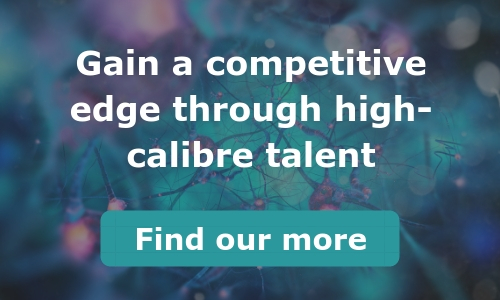With the advantages of workplace diversity (nineteen per cent higher revenue and better decisions made eighty-seven per cent of the time), more and more organisations desire to incorporate it. However, the challenge lies in implementing inclusive hiring strategies that allow all candidates a fair chance of securing the position, regardless of their gender, age, nationality or other factors.
A whopping eighty-five per cent of employers consider increasing their diversity as a priority, but forty-five per cent believe their existing hiring tools are ineffective at onboarding diverse employees. While attracting diverse employees to apply for their positions is one thing, ensuring that you have an unbiased hiring process is quite another. Whether we like it or not, unconscious biases can creep into the hiring process during the assessment of candidates. Without incorporating inclusive and fair hiring strategies, you will find it very difficult to reach your diversity hiring goals.
Here are three inclusive strategies to incorporate into your hiring strategy:
1. Inclusive job adverts
An excellent place to start is to take a look at your job description. Candidates are assessed against the criteria specified in the job description, and it informs other important touchpoints in the candidate journey, most notably, job adverts.
The job advert is your chance to leave an impression of prospective candidates. If you represent a startup or small business, the job advert might be the first time an individual engages with your brand. You’ll want to leave a positive impression.
Job adverts that are written to target rigid candidate personas risk putting off qualified candidates that don’t fit that persona. Therefore, you need to ensure that your language is as inclusive as possible. There are plenty of highly qualified and talented executives that don’t fit the status quo. Each candidate, with their unique skill set, experience and identity can contribute new, innovative ideas and ways of doing things. By excluding these candidates, whether unintentionally or by design, you are at a competitive disadvantage.
The language used can make or break a job advert. The purpose of a job advert is to describe the role, its objectives, responsibilities and the skills and experience needed to succeed. Without even realising it, you could be alienating candidates with your use of language. While the position may require certain personality characteristics, you should try to avoid using words such as ‘energetic’, ‘dynamic’ and ‘chairman’, as each provides connotations about the desired individual and puts off talented executives who don’t fit the status quo. Likewise, certain words put off female applicants. Eliminate these and you could attract forty-two per cent more applications. Other language to avoid is industry jargon. While you might think it demonstrates your industry expertise, what should be an easy-to-read document leaves candidates attempting to decipher the information. At the very least, don’t abbreviate when introducing an industry term in the job description for the first time. Write the term in full and put the abbreviation in brackets. From then on you can refer to the abbreviated term.
It’s not uncommon for employers to declare themselves as equal rights employers in job adverts. This essentially means that as an organisation, they don’t discriminate based on demographics and diversity. However, for many candidates, this feels like cut and paste legal text. Go one step further by demonstrating your commitment to inclusivity through your language. Additionally, include details about your employer brand, giving prospective applicants a feel for what it would be like to work at your organisation demonstrate your organisation’s stance on diversity.
2. Blind CVs
Humans are biased by nature. Whether it’s unconscious or not, bias can negatively impact the hiring process. Hiring managers can bring their own opinions and beliefs into the process when shortlisting and interviewing candidates. This, therefore, sets some candidates up for failure from the very start.
A strategy to remove bias when hiring managers assess CVs is to remove all information that reveals the identity of the candidate. Information such as name, gender and socioeconomic background can reveal the diversity of the applicant. Striking off this information can help the hiring manager to assess candidates on their skills and achievements, rather than their diversity. There are two different ways that this personal data can be removed from CVs:
- AI: AI has become increasingly adopted into the recruitment sphere. There are many Applicant Tracking Systems (ATS) available that can automatically detect and hide personal information on CVs. Once this process has been completed, the hiring manager will then receive the adapted CV and be able to make non-biased judgements about the capability of the candidate.
- Remove information manually: Ask a trusted colleague who’s not directly involved in the hiring process to go through the CVs and manually delete all personal information. This is just as effective as AI but can be a laborious process.
RELATED: Increase quality-of-hire by partnering with a reputable boutique talent consultancy
As a general rule of thumb, you should try to have at least two people involved in the shortlisting process. Whether it’s asking a colleague to help you create blind CVs, or having two hiring stakeholders assess CVs, this helps to create a more inclusive hiring process. The hiring stakeholders can work together to score each application and create an average. This helps to ensure that each candidate has an equal chance of succeeding and securing the position.
3. Blind interviews and assessments
While removing bias from CVs is relatively straightforward, blind interviews are a different kettle of fish. It’s incredibly challenging to eliminate bias during this stage as even initial phone interviews give gender and nationality clues. However, you can successfully implement blind assessments – aka aptitude tests – which you can send to longlisted candidates. Assessments could include questions to determine their technical fit (their technical skills, experience and ability) and cultural fit (their values, beliefs and conduct). This will help you during the shortlisting stage and is just another strategy that guarantees more inclusivity.
In terms of good etiquette, you should ask candidates if they need any adjustments at the interview. By asking this question, you demonstrate that you’re an inclusive employer that is accepting of diverse candidates that may need additional requirements.
There are many ways that you can ensure that the interview process is as fair and inclusive as possible. You should create clear interview guidelines with a list of standardised questions so that all hiring stakeholders are on the same page. Avoid asking questions that pry into the candidate’s personal life, such as whether they have children, as you could form biased opinions about them. For every response given, you should mark each candidate out of ten and then add up their total. This will help to determine which candidates scored the highest and are therefore the best technical and cultural fit. Instead of factoring in the gender, age or nationality of a candidate, your questions will test their ability to perform in the role. Again, to make this as fair and inclusive as possible, you could ask another hiring manager or trusted colleague to give an additional rating.
Conclusion
While it may seem that a lot of work is required to make your hiring process more inclusive, the business case for a diverse workforce far outweighs the costs. Positioning yourself as an organisation that accepts talented executives from all walks of life, is not just good for business but also morale. Incorporate some or all of these hiring strategies into your hiring process and watch the benefits unfold.
For more hiring advice tailored to hiring managers in the life science industry…
- Read Hiring Managers: How To Hire For Diversity.
- View our talent solutions to see how we can help you gain a competitive edge through talent.
* Fraser Dove International is a talent consultancy operating exclusively across the life sciences industry. While our roots lie in executive search, we provide more than the traditional recruitment services. Uniquely placed within the market, we have been providing cutting-edge talent solutions and insight to organisations at all stages of their journey – from start-up to established leaders – since 2013.

 Estimated read time: 5 mins
Estimated read time: 5 mins Date posted:16/03/2020
Date posted:16/03/2020





